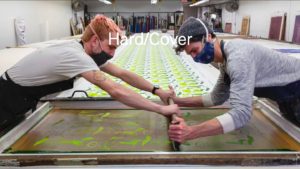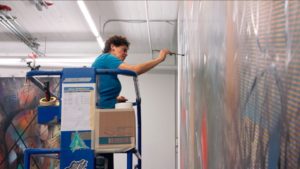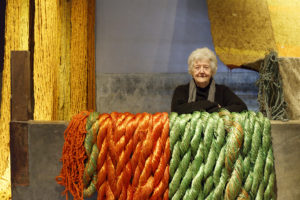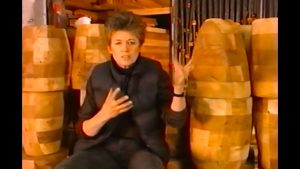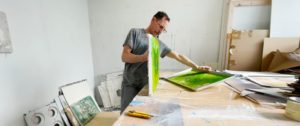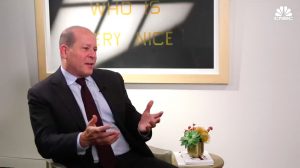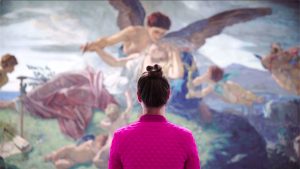“So, you [Tracy Fitzpatrick, Director, Neuberger Museum of Art] were showing us some other Beardens that you had – some small collages and everything. And we went to the basement first, you were showing us all of that, and we were like, ‘Yeah, this is nice,’ and then we were upstairs in a display of the permanent collection – the Neuberger Collection – and I saw all these abstract paintings, and I was like, ‘Bearden can go right there’ between Rothko and…” — Diedra Harris-Kelley, Co-Director, The Romare Bearden Foundation
Romare Bearden (1911-1988) was one of the more enigmatic and diverse artists of the postwar period in America, slotting right in with better known (white, it should be noted) artists such as Philip Guston who shifted from the prevailing abstraction of the 50s and 60s to more representational works as the times demanded. While he’s better known for his later collage work, Bearden produced an extraordinary body of abstract work, the focus of a recent exhibition at DC Moore Gallery and book by Tracy Fitzpatrick, Director, Neuberger Museum of Art. Fitzpatrick and Diedra Harris-Kelley, Co-Director of the Romare Bearden Foundation, were recently in conversation at DC Moore Gallery.
From DC Moore Gallery:
After painting and drawing for nearly two decades, the noted African American artist Romare Bearden (1911-1988) turned to songwriting for a few years in the early 1950s. When he began painting again in earnest around 1955, his work was more abstract than previously, as he explored new modes of expression. At first, he layered paint thickly, in abstracted figural works that were increasingly less representational than what he had been doing in the 1940s.
By 1957, Bearden had moved to pure abstraction. His dynamic new canvases were larger, all-over paintings of organic, atmospheric forms, merging and coalescing. A critic noted in an exhibition review, “they are full of suggestions of stratified earth, subaqueous suspensions and clear auroras of atmosphere.”[i] As with Heart of Autumn (c. 1960), he created active surfaces and rich tonal effects with paint that flows across the canvas or is worked in several different ways. In others, he began to use collage elements of painted, torn paper or applied canvas. The underlying canvas plays an important role in many of the works, too, as the paint is often thinly applied, resulting in lyrical abstractions of distinctive beauty.
Video by Bower Blue.









